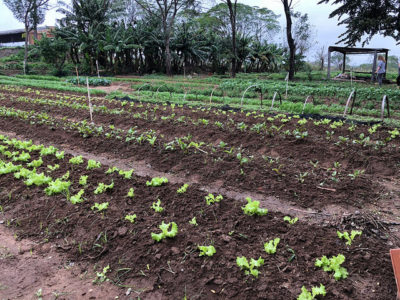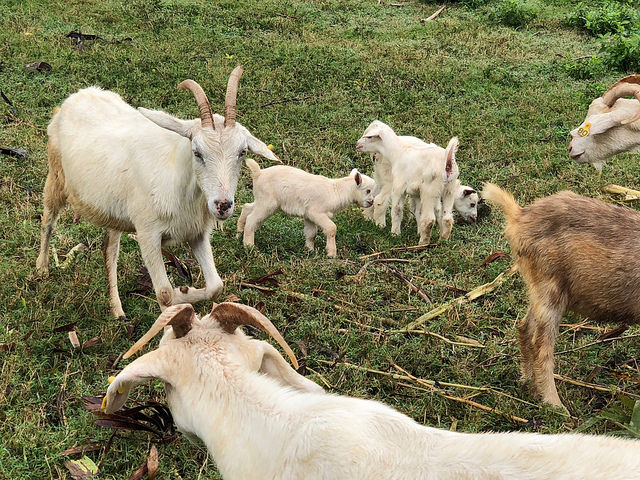 Thursday, July 5 – Today we visited the Escuela Cerrito, a San Francisco de Asis Agricultural School for high school students, located in the Chaco. Students from all over Paraguay apply to this high school, and only a select number attend. Our tour guide, Lucas, took us around the whole school, and showed us everything the students do. The students live at the school and work on the farm and sell the products produced at the school. They learn how to milk cows, take care of pregnant pigs, de-feather chickens, plant herbs and other vegetables, and so much more. They rotate through the different areas, plants, and animals every 2 months. Even if the school is on a break, some students always have to be at the school to take care of the animals, since it’s a working, sustainable farm.
Thursday, July 5 – Today we visited the Escuela Cerrito, a San Francisco de Asis Agricultural School for high school students, located in the Chaco. Students from all over Paraguay apply to this high school, and only a select number attend. Our tour guide, Lucas, took us around the whole school, and showed us everything the students do. The students live at the school and work on the farm and sell the products produced at the school. They learn how to milk cows, take care of pregnant pigs, de-feather chickens, plant herbs and other vegetables, and so much more. They rotate through the different areas, plants, and animals every 2 months. Even if the school is on a break, some students always have to be at the school to take care of the animals, since it’s a working, sustainable farm.
 Lucas first showed us the gardens, and how they planted the vegetables. He talked about how the different seasons affect the growth of the vegetables and other plants. After that we saw the animal area. We saw the goats and learned about how they were fed. We were given the opportunity to pet a baby goat, which was exciting to everyone! After that we walked through the area with the pigs, cows, and chickens, and some of us saw how chickens were processed and de-feathered. After chickens are beheaded and the blood drained, they are put in a machine that helps remove the feathers; the sound was a bit unnerving. Our final stop before lunch was the dairy to learn how cheese is made. The tour ended with a delicious chicken and rice lunch that was prepared and served by the students.
Lucas first showed us the gardens, and how they planted the vegetables. He talked about how the different seasons affect the growth of the vegetables and other plants. After that we saw the animal area. We saw the goats and learned about how they were fed. We were given the opportunity to pet a baby goat, which was exciting to everyone! After that we walked through the area with the pigs, cows, and chickens, and some of us saw how chickens were processed and de-feathered. After chickens are beheaded and the blood drained, they are put in a machine that helps remove the feathers; the sound was a bit unnerving. Our final stop before lunch was the dairy to learn how cheese is made. The tour ended with a delicious chicken and rice lunch that was prepared and served by the students.

After leaving the school, we visited an indigenous community that lives on the land next to the Cerrito, to meet the leader of the community and to learn more about their lifestyle and the problems faced in their community. Their youth have problems with being part of modern society through technology while still maintaining their cultural roots. This would be the issue we would tackle during our Hackathon.
Following the community visit, we returned to the hostel in Asunción and then went shopping at the street markets in the centro. There, we saw different types of artisans’ crafts, such as leather bags and purses, hammocks, guapas and boxes made from a scented wood, and a variety of jewelry made of stones, wood, and thread. So many items were woven by hand and had a lot of unique details. The artisans were proud of their work and wanted everyone to buy from them. It is really sad that not everyone can see what we did because it was really beautiful and needs to be seen.
I don’t think anyone really thinks to look for these things when they come to Paraguay. It seems to me like the United States doesn’t really value work that’s done by hand anymore. Everything is mass produced, and there really isn’t any value to work made by hand anymore.
Censire W., Parkdale High School
